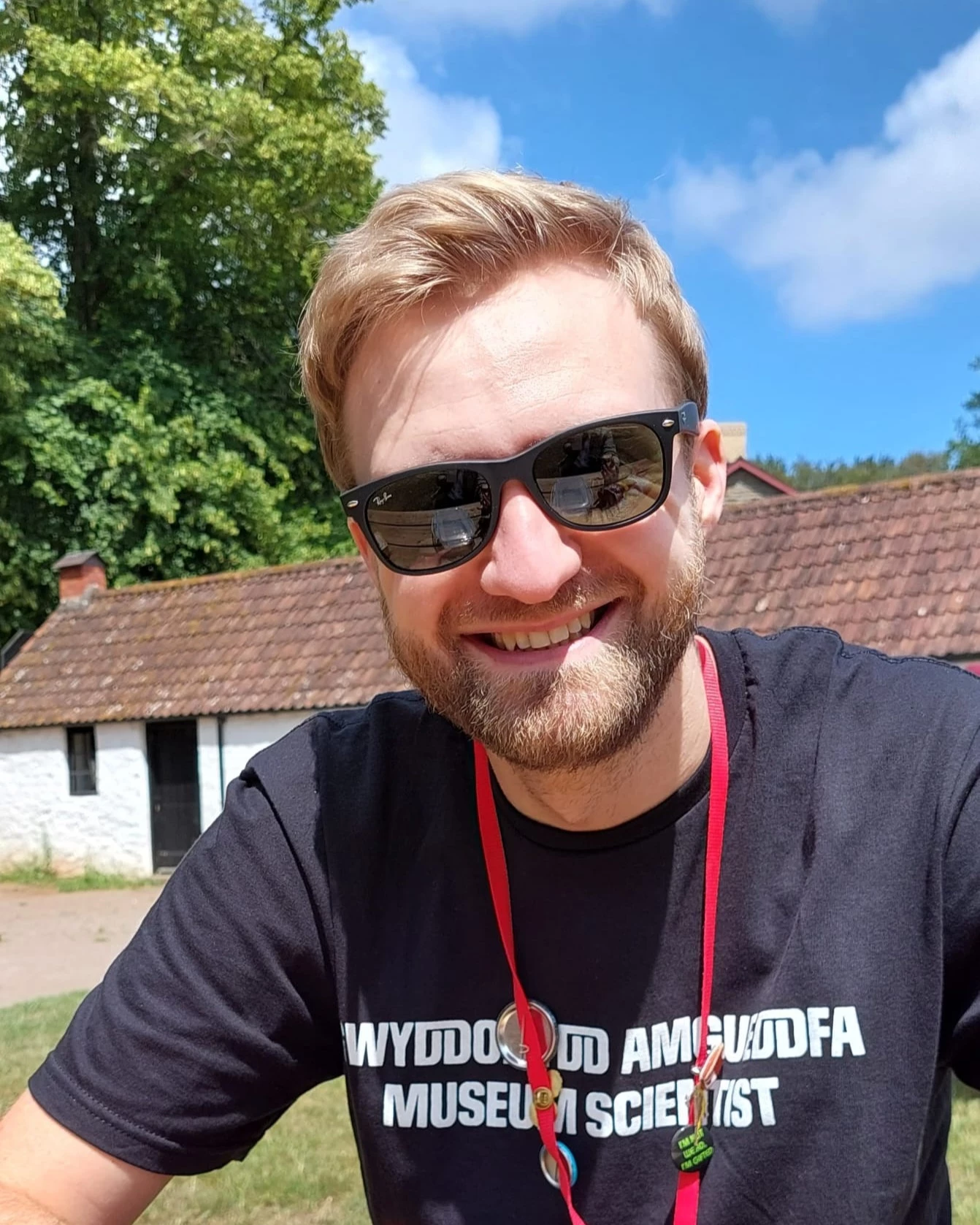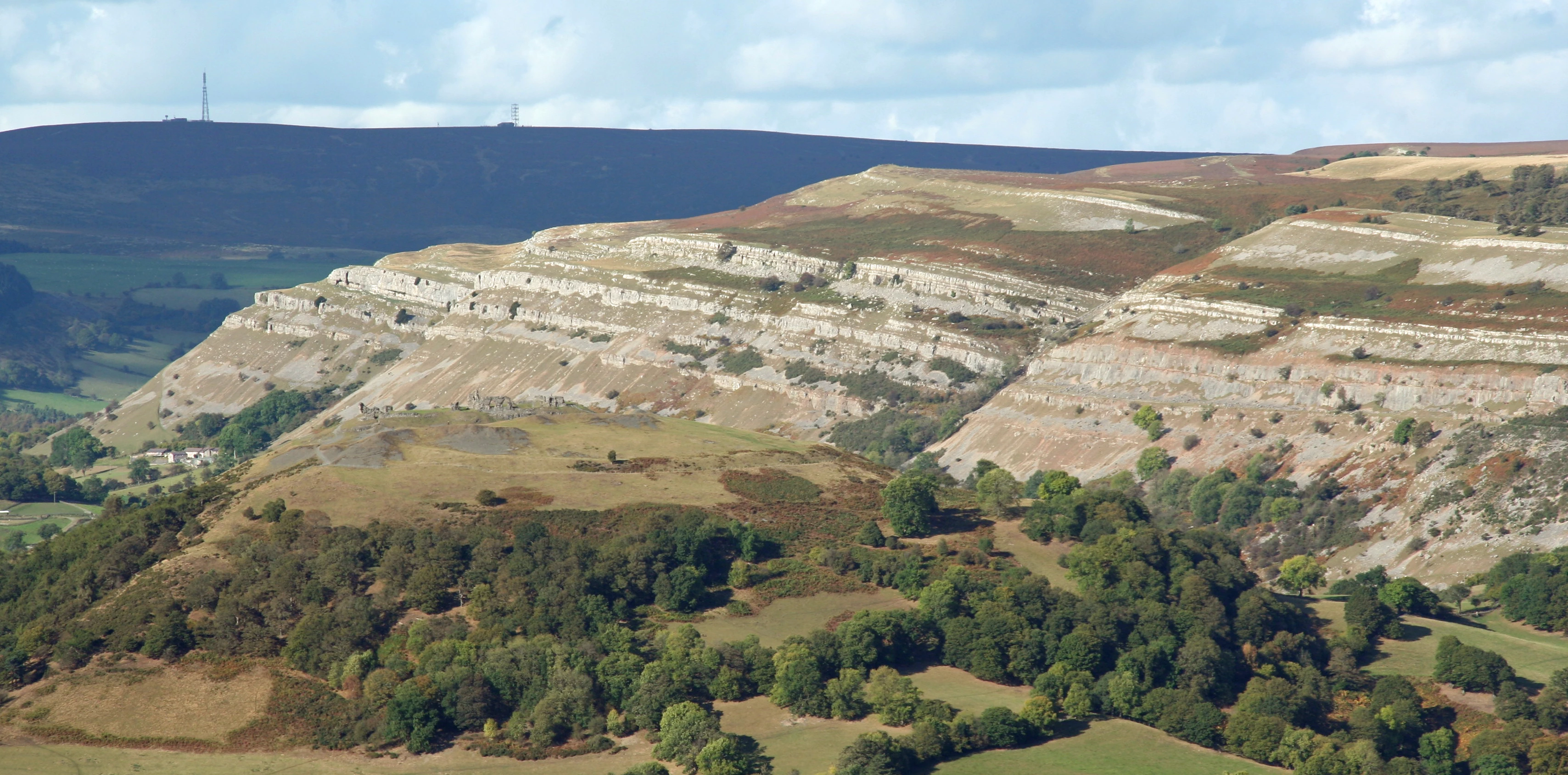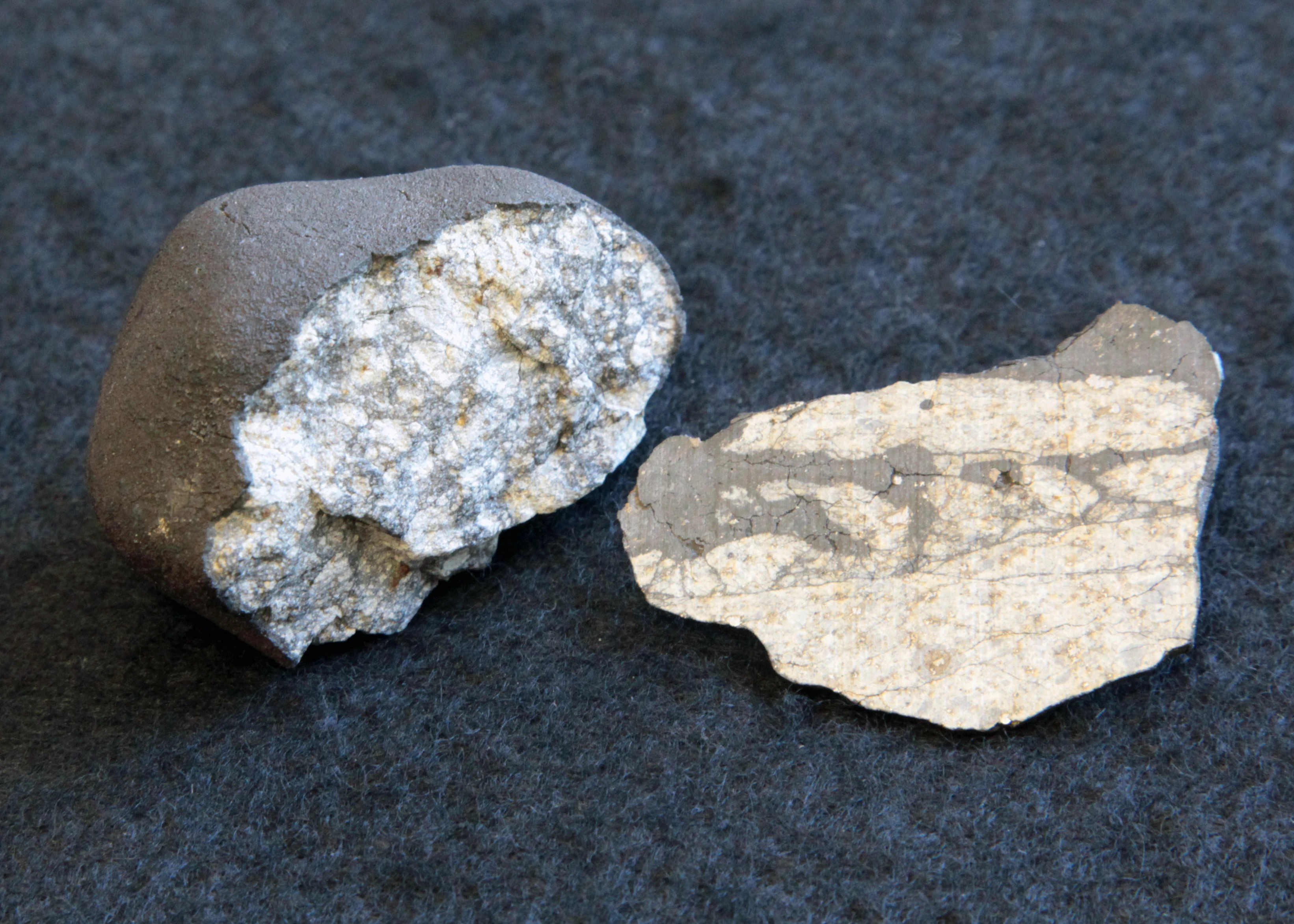Petrology
Wales is home to some stunning geology: The limestone escarpment at Creigiau Eglwyseg, Llangollen.
Samples of Chelyabinsk meteorite, a type of chondrite meteorite that exploded over Chelyabinsk, Russia in February 2013.
Glaucophane in blueschist, Anglesey. This beautiful thin section contains glaucophane, a blue amphibole. This mineral indicates the rock was buried to depths of 35km in the Earth’s crust and was returned to the surface before being transformed into a different mineral.
Archaeological excavations at Craig Rhos-y-felin. Petrological and geochemical investigations have enabled the foliated rhyolite found as debris at Stonehenge to be matched to this source outcrop (image courtesy of Adam Stanford).
Petrology is the study of rocks, their mineralogy, texture, structure and origins.
The museum Petrology Collection, comprising 35,000 specimens (including 10,000 thin sections), provides a unique resource for enquiries, reference and collection-related research.
Active areas of collecting focus on Welsh building and ornamental stones, Welsh igneous and metamorphic rocks, and meteorites.
Collections
In addition to reference material from the UK and World localities, the strengths in the collection include:
- Welsh Petrology reference collection
- Welsh, UK and World research material (derived from Ph.D. theses and published work)
- Welsh Coal Collection, collected during 20th century from working collieries
- Welsh Slate Collection
- Welsh Building & Ornamental Stone reference collection
- Meteorite collection
- Archaeopetrology collection - specimens from artefacts and buildings
- Shallow borehole collection from South Wales, with associated logs and maps
Research
Neoproterozoic-Cambrian geology of NW Wales (Anglesey and Llŷn) focussing on provenance of Monian Supergroup sediments. (Dr J M Horak)
Lower Palaeozoic igneous activity in Wales (Dr R.E. Bevins)
Palaeogene igneous activity in Wales and adjacent areas (Drs R.E. Bevins & J.M. Horak)
Archaeopetrology collection has supported research in a variety of projects including:
- Medieval use of stone in Wales, including corpus on inscribed stones and stone sculpture in Wales (Dr J.M Horak)
- Provenance of Welsh spotted dolerite bluestones and rhyolites at Stonehenge (Dr R E Bevins).
Ongoing research into Welsh building and ornamental stones.
- Carboniferous sandstones of northeast Wales used in a built environment (e.g. Cefn, Gwespyr Sandstone).
- Carboniferous ornamental ‘marbles’ of Wales (e.g. Halkyn, Snowdrop Marbles)




